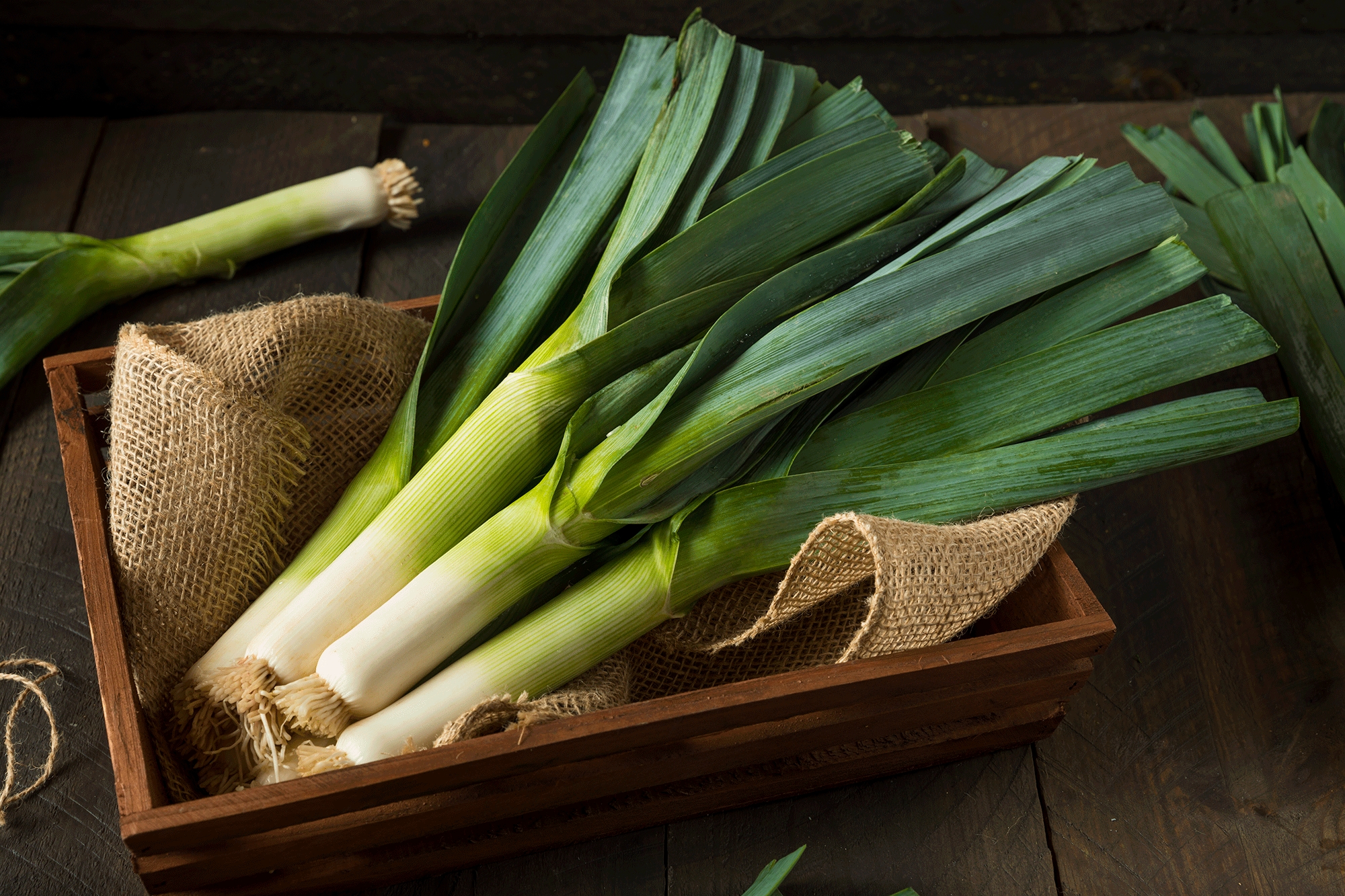Leek propierties
Leek has an onion-like taste and is a vegetable that provides vitamins and fibre. We’ll tell you about the benefits that leek can bring you.
fresh food
Share

Leek belongs to the Iliaceae family, more specifically to the genus Alium, to which garlic, onions and chives also belong. Unlike other members of its family, the leek is not thick around the bulb or stem.
Leeks originate from Mesopotamia, Egypt, Turkey and Israel and have existed for at least 4,000 years. In ancient times they were used as food, but also as medicine. Its cultivation and consumption were introduced in Spain in the Middle Ages. These days they are grown mainly in the northern part of Spain: Basque Country, Navarra and La Rioja. Although we are a great consumer of this vegetable, the country that produces and consumes the most leeks is France.

Leek properties
Water is the main component, which, together with its low carbohydrate content, makes the leek a food with very low caloric input. It also has a significant amount of fibre and a few vitamins and minerals:
- Source of Vitamin C helps protect cells from oxidative damage and promotes iron absorption.
- Source of vitamin B6, which works in the immune system and helps reduce tiredness and fatigue.
- Rich in Folic Acid, which helps reduce tiredness and fatigue. Very important during pregnancy, as it contributes to the growth of maternal tissues.

Types of leeks
The leek season starts in October and runs until the end of May. Although nowadays we can find them all year round in supermarkets. There are different varieties depending on their size:
• Short and semi-long: they are more common in summertime and their taste is milder.
• Long leeks: these are the most common.
• Wild leek: also known as “leek garlic” because of its intense taste, somewhere between leek and garlic. Perfect for stir fries
How to cook leeks
In general, leeks can be eaten boiled, fried, or raw. However, to maintain all their benefits and properties, it is better to steam rather than boil or fry them.
Ideas to prepare leeks
- Cut the greenest part of the leek and remove the hardest leaves on the outside.
2. Remove the bulb and cut along the stem.
3. Rinse well under running water.
4. Cut into juliana strips lengthwise, or you can also cut it into rings. In any case, it has a strong taste all the way up to the greenest part.
5. Make sure the strips are very thin to shorten cooking time.
6. Let leeks rest at least 5 minutes before cooking.
Kitchen trick: take advantage of leek leaves
Although these leaves may seem a bit too fibrous to eat raw, we can use them to enrich a broth or introduce them into soups and potages, where they are softer. Always wash well.
The long leek stems, which are greener, can be used to give more flavour to stir fries, tortillas or quiche-style savoury pastries, as well as to adorn dishes, as we often do with chives.






